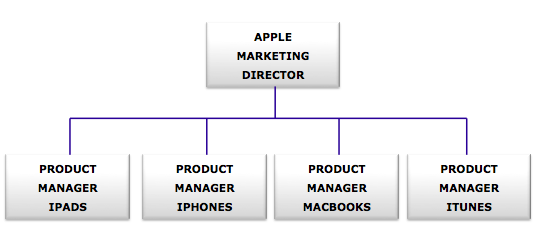In theory most managers know what the four marketing organisation structures are. But when it comes to putting them into action? Well, things get a bit blurry from here.
That is because the concepts themselves are a bit blurry. The lines aren’t clearly defined and at times the structures seem anything but structured. This is because academics insist all companies fit into one of these four marketing organisation structures. To make this work, they need to be as vague and undefined as possible.
Have you ever wasted your time reading your horoscope? If so, you probably noticed it is very vague and general. “Leo’s will want to sleep in this morning? Me too! Cancer will complain about the weather? I was thinking it’s a bit chilly!” Academics have molded these structures around a similar premise.
While that has worked wonders for the success of this concept, it has severely hindered the practicality of this concept. So here is a no nonsense guide to the four marketing organisation structures. Plus I’ve thrown a bonus fifth organisation structure which your business most likely fits into.
1. Skills Centered Structure

In this structure, marketing staff are grouped by functional specialisation. So there is a separate team for sales, market research, advertising, public relations, customer service and the like. These teams work on all product lines and become really, really skilled at what they do.
This structure is great for marketing coordination as the manager can easily assign tasks. This also breeds clear lines of responsibility.
However this structure has a tendency for functional specialists to become too restricted in outlook. The market researchers may get frustrated at product developers for not seeing a product has no market scope. Or the customer service team may start a feud for promotions for dishonest promotional material.
This structure also has little room for growth. If your company decides to introduce a new productline, coordination and control become difficult. So in short, this structure suits oganisations with small product ranges with great similarities.
That is why this structure would suit Urban Homes, Hamilton renovations champions. Product, or in this case service, offerings are similar. It wouldn’t make sense to split marketing into kitchen renovations and bathroom renovations! This would create unnecessary bureaucracy.
2. Product Centered Structure

In this structure staff are grouped into productlines. The marketing director oversees product managers. Product managers are in charge of all marketing activities for individual products.
This allows talented managers to devote all their energy into the marketing of a particular product. Managers become experts in everything to do with a product and it’s marketing. This means there won’t be any brand confusion and there will be synergy in the marketing mix.
However product managers will need to negotiate (I prefer the word scavenge) for company resources. So if a hunter/gatherer is not a skilled negotiator, that productline will become underdeveloped.
This structure also emphasises short term success for product lines. This leads to an incomplete marketing orientation ie a short lived company. So this structure is only appropriate when product differences are great and viable only when sales volumes differ greatly.
Because of this, the product centered structure would suit Apple. Sure Apple’s products don’t differ tremendously in their hardwiring – people love to call iPad’s big iPhones and iPhones big iPods. But faithful followers perceive them as entirely different products. To ensure customers still perceive this, Apple needs to ensure marketing is not duplicated.
3. Market Centered Structure

This structure is quite similar to the product centered structure. Except instead of grouping managers into products, they are grouped into markets. These market managers oversee all the marketing for an entire market. For a quick refresher products are the things sold, markets are the people things are sold to.
This translates into action as specific markets purchasing more than one productline. Using the Apple example, an older man with sight problems might purchase both an iPad and a Mac computer. In fact, some markets are grouped together because of their trend to purchase multiple products.
This structure is great as it has an explicit marketing orientation. It also focuses effort on specific markets. This means markets receive utmost attention and care. Customer relationship enthusiasts rejoice!
However this structure also has an overemphasis on the short term on market success. Just liek the product structure, it is most appropriate when differences between segments are great and sales volumes differ.
A possible example of this structure would be the New Zealand Fire Services. This organisation has many, many markets with massively differing needs. They educate schools, launch family-oriented campaigns, educate corporations and are in constant communication with the Government. These markets are so varied, it wouldn’t make sense to structure this organisation in any way other than a market structure.
4. Matrix Structure

In this awful looking structure, two previous structures are combined to make a new one. This is usually a combination between a skills structure and a product structure. This allows equal specialisation in two areas. It also avoids duplication of effort.
I do not have an example of an organisaion as there simply are none. This structure is near impossible to churn out in the real world. This is because having two chains of command is incredibly confusing.
5. Bonus Structure
There is a fifth marketing organisation structure not often mentioned by marketing academics. But I can guarantee you that most New Zealand businesses fit into this category. Here it is:

Most small businesses are too small to have an entire team. Because of this, a marketing manager is suffice. No bureaucracy, no internal politics and no confusion over the marketing mix. Think about a perfectly integrated system!
This structure can be seen in most dairies, hairdressers and trades throughout New Zealand.
Which of these structures do you use?
